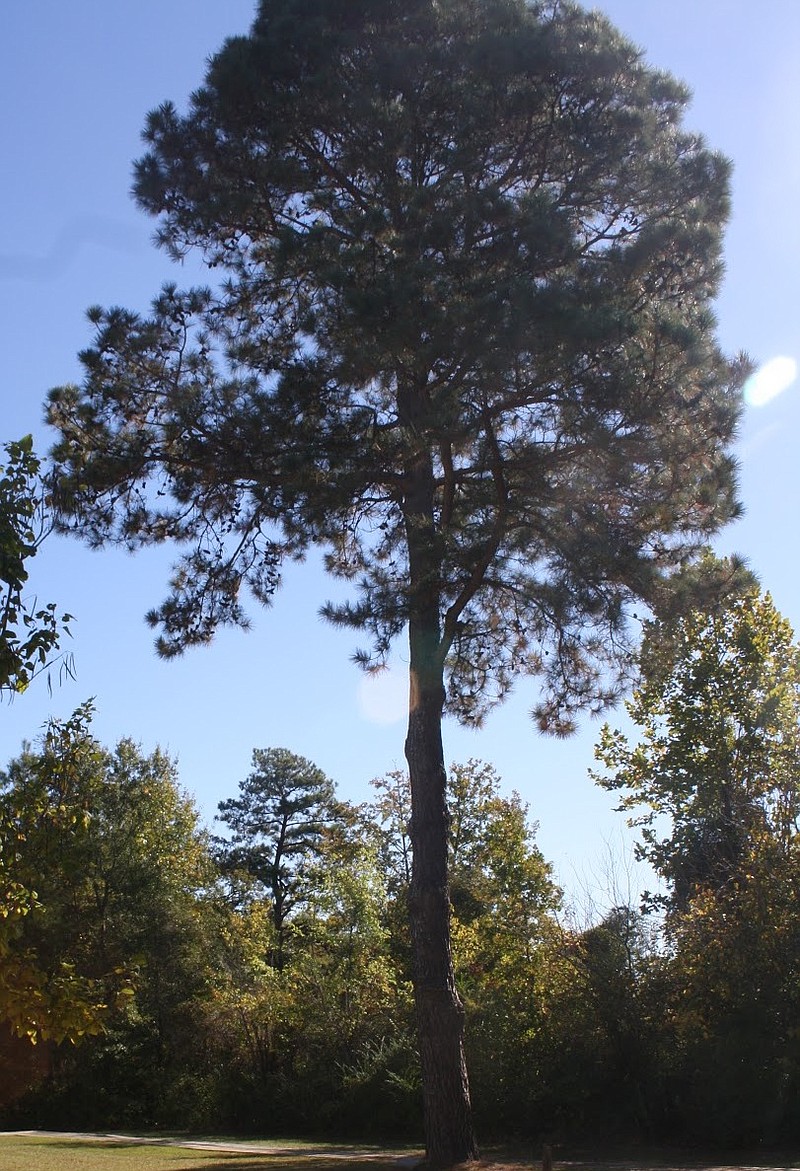A tree in Arkansas' Historic Washington State Park has a connection to the United States space program that one astronaut's daughter is reminding the world of more than 40 years after the tree was planted.
An ordinary-looking loblolly pine tree on the park's grounds came from a seed that orbited the moon with astronaut Stuart Roosa during the Apollo 14 mission in 1971. It is one of less than 100 Moon Trees still living that Roosa's daughter Rosemary Roosa wants to preserve, promote and propagate through a nonprofit foundation she created.
"I'm trying to keep these living legacies from Apollo alive," she said in a recent interview.
During Apollo 14, the third mission to land men on the moon, Stuart Roosa piloted the command module in lunar orbit while Alan Shepard and Edgar Mitchell spent two days on the surface.
Among personal items Roosa was allowed to bring were 400 to 500 seeds from loblolly pine, sycamore, sweetgum, redwood and douglas fir trees, taken along as an experiment sponsored by NASA and the U.S. Forest Service. No one could predict the effects on the seeds.
"They weren't sure of the effects of radiation or just the space travel itself, if they would grow in any weird way, if they would grow sideways or if they would even grow at all," Rosemary Roosa said.
Stuart Roosa grew up in rural Oklahoma, and his love of the outdoors and experience as a U.S. Forest Service firefighter made him a natural for the Moon Tree project.
"He loved nature and didn't mind being a loner, and so when he was in high school, a buddy of his said, 'Hey, let's take a summer job with the Forest Service.' So they wound up going out west to Oregon. They were in the remote areas of the forest, and their job was to put out forest fires, so he really got a love for trees back then," Rosemary Roosa said.
During decontamination procedures after Apollo 14's return to Earth, the Moon Tree canisters burst open and the seeds mixed together, according to NASA's official history of the experiment.
Scientists feared the project had been ruined, but Forest Service facilities in Mississippi and California successfully germinated 420 to 450 of the seeds within a few years.
Some of the seedlings were planted alongside control trees that had never left the planet to determine if there would be any difference between them. Nothing unusual about the Moon Trees' growth has been observed.
Many others were distributed to state forestry services to be planted as part of U.S. bicentennial celebrations in 1976. They included the tree at Historic Washington State Park and another loblolly pine at the Sebastian County Courthouse in Fort Smith, Ark.
Neither NASA nor the Forest Service kept a complete record of the trees' distribution, so a primary mission of Rosemary Roosa's Moon Tree Foundation is to track them all down. She said a researcher writing a book about the Moon Trees estimates that less than 100 survive. The others have perished for various reasons, including natural disasters.
"When Katrina came through, there was an original loblolly pine in New Orleans, and the salt water came up and it killed that. And there was a beautiful sycamore that was at the Kennedy Space Center, the visitors center, that got hit with Hurricane Irma," she said.
The foundation's other goals include propagating second-generation Moon Trees and using their planting as an opportunity to educate people about the U.S. space program around the world.
"We go to either schools or institutions or various historic places, and we usually dedicate a Moon Tree, and I talk about my father, and I have a little movie that I show. And just really try to get people, kids interested in science and math and space and going back to the moon and Mars," Roosa said.
She noted coming trips to Switzerland and France, partnership with an enthusiast in Brazil, and planting a new Moon Tree garden next year at the Kennedy Space Center to honor the 50th anniversary of Apollo 11, the first moon-landing mission.
Another coming milestone is even more important to her: the 50th anniversary of her father's mission to the moon.
"My goal is to plant 50 trees in 50 locations between now and my father's 50th anniversary, which will be in 2021," she said, adding that her longer-term ambitions go much farther-literally.
"My hope, my dream, I guess-I don't know that it will happen-is that they'll possibly use some of these Moon Trees as a source of oxygen, either going to Mars or using them to start planting Mars," she said. "It would be neat if these Moon Trees somehow found their way back to space."
The Moon Tree at Historic Washington State Park is next to the 1836 courthouse, between Hamilton and Jay streets. A new marker for the tree is needed, but tour guides still point it out, park historian Chris Adams said.
---
ONLINE
NASA Moon Trees page: nssdc.gsfc.nasa.gov/planetary/lunar/moon_tree.html
Moon Tree Foundation: moontreefoundation.org
Historic Washington State Park: arkansasstateparks.com/parks/historic-washington-state-park

